

It has now become a rather standard exercise, with availble
technology, to construct graphs to consider the equation
and to overlay several graphs of
for different values of a, b, or c as the other two are held
constant. From these graphs discussion of the patterns for the
roots of
can be followed. For example, if we set
for b = -3, -2, -1, 0, 1, 2, 3, and overlay the graphs, the
following picture is obtained.
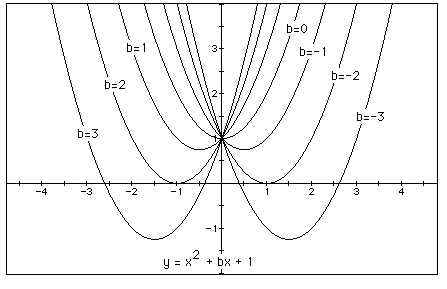
We can discuss the "movement" of a parabola as b
is changed. The parabola always passes through the same point
on the y-axis ( the point (0,1) with this equation). For b <
-2 the parabola will intersect the x-axis in two points with positive
x values (i.e. the original equation will have two real roots,
both positive). For b = -2, the parabola is tangent to the x-axis
and so the original equation has one real and positive root at
the point of tangency. For -2 < b < 2, the parabola does
not intersect the x-axis -- the original equation has no real
roots. Similarly for b = 2 the parabola is tangent to the x-axis
(one real negative root) and for b > 2, the parabola intersets
the x-axis twice to show two negative real roots for each b.
Now let's take a close look at the what the parabola does for
diffenrent values of b not shown. We have concluded that when
b = 0 that the minimum point of the parabola will be on the point
(0,1) and that this is the highest the minimum point of the parabola
can get. Also it seems that when b gets larger then its minimum
point seems to slide down a curve into the III quadrant. When
b gets small its minimum point appears to slide down a curve into
the IV quadrant. The curves that the minimum point slide down
are symmetrical, so lets take a closer look.
Here is a movie to give a better idea of what we are trying to point out.
As we see from the movie, the locus of the parbola is the parabola
Consider again the equation
Now graph this relation in the xb plane. We get the following
graph.
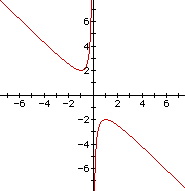
If we take any particular value of b, say b = 3, and overlay
this equation on the graph we add a line parallel to the x-axis.
If it intersects the curve in the xb plane the intersection points
correspond to the roots of the original equation for that value
of b. We have the following graph.
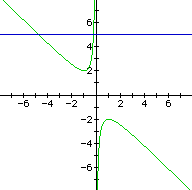
For each value of b we select, we get a horizontal line. It
is clear on a single graph that we get two negative real roots
of the original equation when b > 2, one negative real root
when b = 2, no real roots for -2 < b < 2, One positive real
root when b = -2, and two positive real roots when b < -2.
Consider the case when c = - 1 rather than + 1.
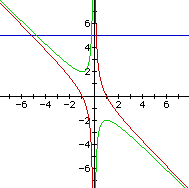
In the following example the equation
is considered. If the equation is graphed in the xc plane,
it is easy to see that the curve will be a parabola. For each
value of c considered, its graph will be a line crossing the parabola
in 0, 1, or 2 points -- the intersections being at the roots of
the orignal equation at that value of c. In the graph, the graph
of c = 1 is shown. The equation
will have two negative roots -- approximately -0.2 and -4.8.
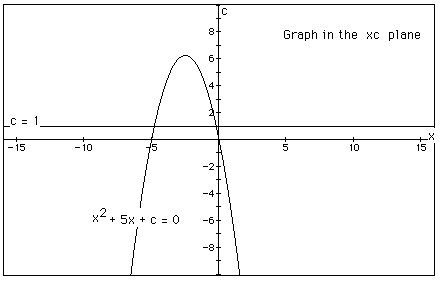
There is one value of c where the equation will have only 1
real root -- at c = 6.25. For c > 6.25 the equation will have
no real roots and for c < 6.25 the equation will have two roots,
both negative for 0 < c < 6.25, one negative and one 0 when
c = 0 and one negative and one positive when c < 0.